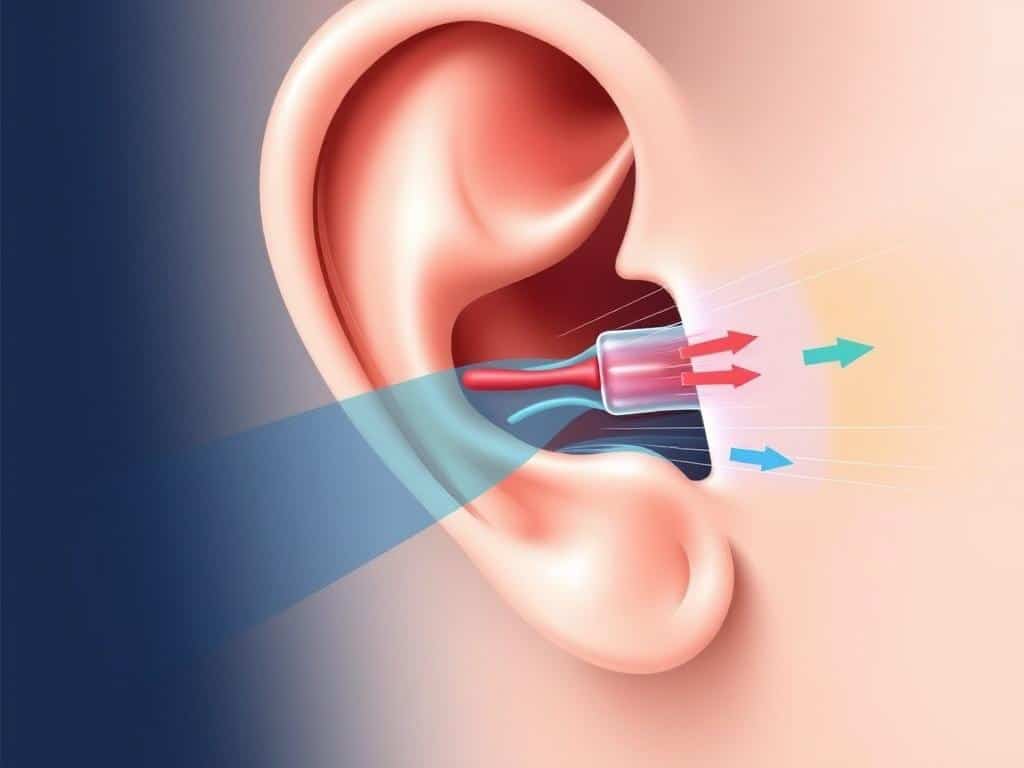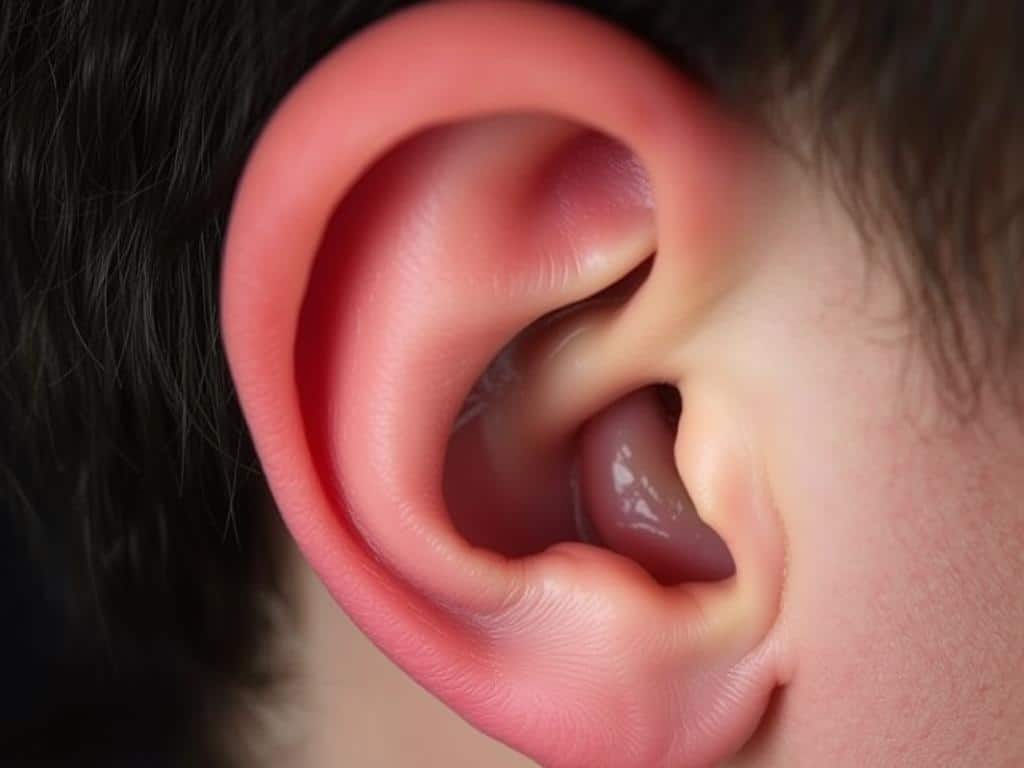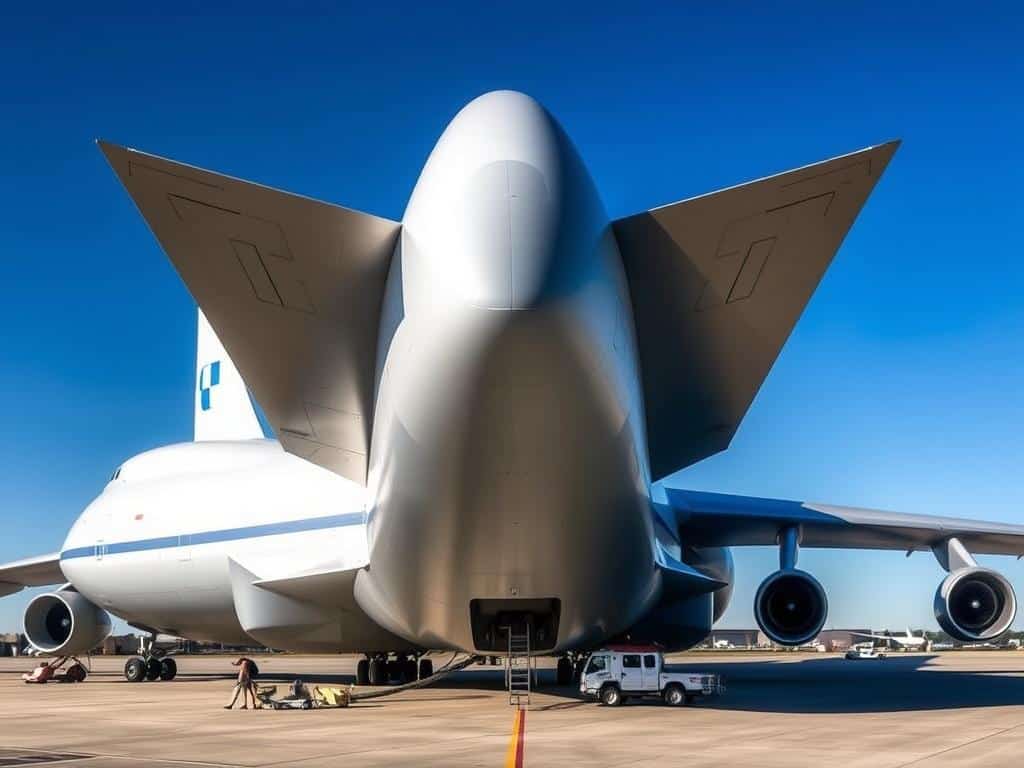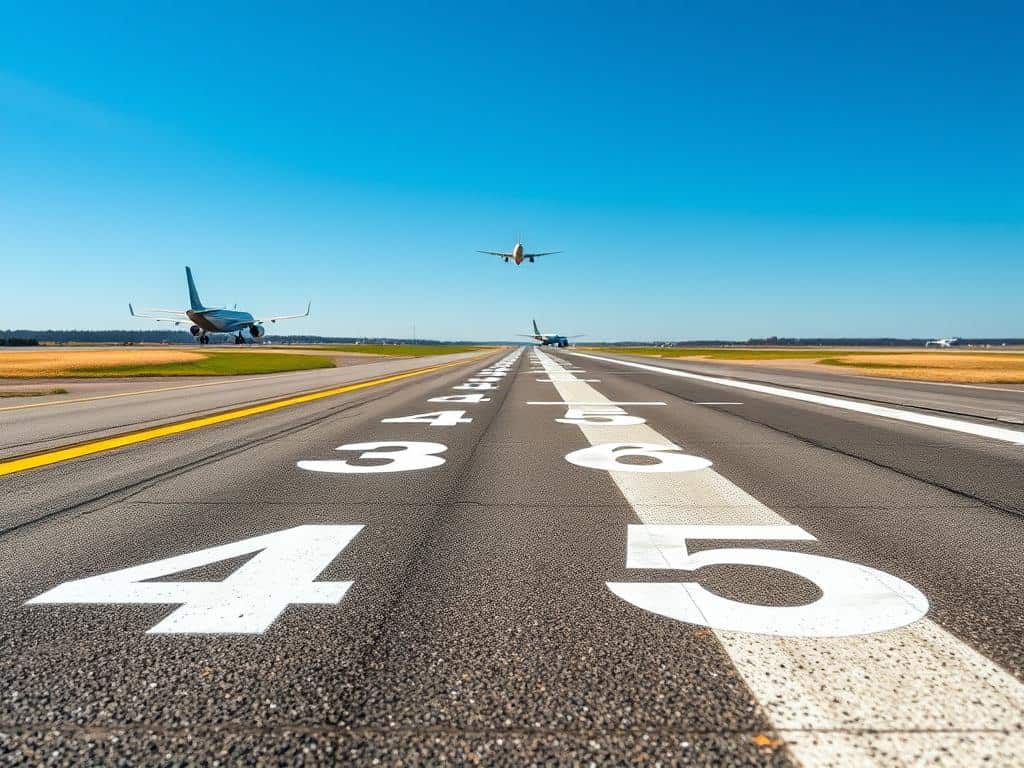Ever felt your ears pop on a plane? It happened to me last time I flew, and it was quite unsettling. This phenomenon, called airplane ear or ear barotrauma, is common but not often talked about. It affects many people who fly often.
When we fly, our bodies have to adjust to the changing air pressure. This creates a unique situation where our body and environment interact. Knowing about this science can make flying less stressful. It also helps us handle any discomfort that comes up.
Let’s dive into the science behind cabin pressure. We’ll also look at how to make flying more comfortable for everyone.
Key Takeaways
- Airplane ear occurs due to an imbalance between middle ear pressure and external cabin pressure.
- About 25% of travelers experience some form of ear discomfort during flights.
- Severe symptoms can affect about 2% of passengers, leading to pain and hearing loss.
- Children are more likely to get airplane ear because their Eustachian tubes are smaller.
- The Valsalva maneuver is a good way to balance ear pressure.
- Chewing sugarless gum can also help by encouraging swallowing.
Understanding Airplane Ear: The Basics
Airplane ear, also known as ear barotrauma, can cause ear pain during flights. It happens when air pressure outside and inside the ear don’t match. The Eustachian tubes help balance this pressure but can struggle with sudden changes in altitude.
Knowing the signs of airplane ear is key to managing it.
What Is Airplane Ear?
Airplane ear is caused by sudden changes in cabin pressure, like during takeoff and landing. The middle ear, connected to the throat, can get blocked. This makes it hard for pressure to equalize, leading to ear pain.
People with colds or sinus infections are more likely to get airplane ear.
Symptoms of Airplane Ear
The symptoms of airplane ear can vary. You might feel like your ear is full, hear things muffled, or feel pain. In severe cases, you could also experience ringing in your ears, dizziness, or even bleeding.
If these symptoms last more than a few hours or get worse, see a doctor. They can help prevent infections or hearing loss.
The Science of Cabin Pressure
Understanding cabin pressure and its effects on our ears is key. When an airplane goes up, the air inside gets thinner. This makes the pressure outside feel stronger, causing discomfort or pain if not managed right.
How Cabin Pressure Affects Your Ears
Commercial jets keep the air pressure inside like it’s 8,000 feet, even when they’re at 36,000 feet. Going up, the air in our ears gets trapped, making it feel full or like it’s popping. If our Eustachian tube can’t handle this, we might feel pain or even lose our hearing.
Being in this situation for a long time can make things worse. The risk of getting hurt goes up, mainly when the plane goes up or down fast.
Role of the Eustachian Tube
The Eustachian tube is very important for our ear pressure. It links our middle ear to the back of our nose, letting air in and out. This helps balance the pressure inside and outside.
When we swallow or yawn, this tube opens up. This helps our ears adjust to the air pressure. But, some people, like those with sinus problems or young kids, might have trouble with this. Knowing how the Eustachian tube works helps us deal with ear problems when we fly.

Managing Discomfort During Flights
Traveling by plane can be uncomfortable for many, mainly due to cabin pressure changes. It’s key to know how to manage ear discomfort. With some self-care and preventive steps, flying can be more comfortable.
Self-Care Techniques for Ear Popping
Several self-care methods help with ear popping during flights. Yawning, swallowing, or chewing gum can open the Eustachian tube. This allows equal pressure on both sides of the eardrum.
The Valsalva maneuver, which involves gently blowing while pinching your nostrils, also helps. Chewing gum or sucking on hard candy keeps ears comfortable by balancing pressure.
Preventive Measures to Take Before Flying
Preventive steps can greatly reduce discomfort. Before flying, using nasal decongestants about 30 minutes before boarding can help. If you’re sick or have a cold, it’s best to delay flying to avoid ear pain.
Staying hydrated and giving fluids to children during take-off and landing is also key. This helps manage ear pressure effectively.
When to Seek Medical Attention
If you have persistent symptoms like severe pain or hearing loss, seek medical help. Knowing when to get medical attention is important. It helps address issues like chronic sinusitis or ear infections that need treatment.
Listening to your body’s signals is vital for your health while traveling.
Conclusion
Understanding cabin pressure and its effects on my ears is key for a comfortable flight. Airplane ear can be very uncomfortable due to changing cabin pressure, mainly during takeoff and landing. Knowing how these changes affect my ears helps me prepare for trips and avoid discomfort.
Self-care methods like yawning or swallowing can ease ear discomfort. It’s also smart to avoid flying when I’m not feeling well to prevent ear issues. If symptoms last, seeing a doctor is a good idea to check for any complications.
By using these tips, my flying experience will be better. I’ll be able to enjoy my air travel without ear discomfort. Knowing about cabin pressure makes me feel ready to manage my air travel comfort.



